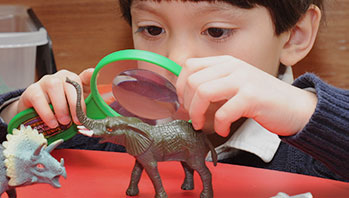- chart paper
- children’s name cards
- clothesline
- clothespins
- items of two different kinds of material (e.g., a piece of paper, a handkerchief, a nylon sock, a paper towel, a washcloth, a gardening glove, etc.)
- marker
- tub filled with soap and water
- dry
- fastest
- slowest
- wet
- wring
MA Standards:
Mathematics/Counting and Cardinality/PK.CC.MA.5: Use comparative language, such as more/less, equal to, to compare and describe collections of objects.
Mathematics/Measurement and Data/PK.MD.MA.2: Compare the attributes of length and weight for two objects, including longer/shorter, same length; heavier/lighter, same weight; holds more/less, holds the same amount.
MA Draft STE Standards:
Physical Sciences/Matter and Its Interactions: Structure and Properties of Matter/PS1.A: Describe, compare, sort and classify objects based on observable physical characteristics, uses, and whether it is manufactured as part of their classroom play and investigations of the natural and human-made world.
Head Start Outcomes:
Logic and Reasoning/Reasoning and Problem Solving: Classifies, compares, and contrasts objects, events, and experiences.
Science Knowledge/Scientific Skills and Method: Observes and discusses common properties, differences, and comparisons among objects.
PreK Learning Guidelines:
Science and Technology/Physical Sciences 19: Explore, describe, and compare the properties of liquids and solids found in children's daily environment.
Different Material—Different Drying Time

© Commonwealth of Massachusetts, Department of Early Education and Care (Jennifer Waddell photographer). All rights reserved.
Skill Focus: Compare and Contrast, Observing, Predicting, Vocabulary
Educator Prep: Before the activity, hang a clothesline in the room.
Have children choose two items of different material. Then invite them to wash the two different pieces of material (see material suggestions above) in a tub of water. Have them wring out each item and hang it on a clothesline to dry.
- Label a two-column chart by having volunteers draw a simple picture of each item at the top of each column (e.g., a sock and a paper towel sheet). Ask children, Which item do you think will dry fastest? Why do you think that?
- Have children place their name cards on the chart in the column under their item choice. After the items have dried, talk with children about their observations and predictions. Ask questions such as,
- Which material absorbs the most water?
- Which material dries faster? Why do you think so?
